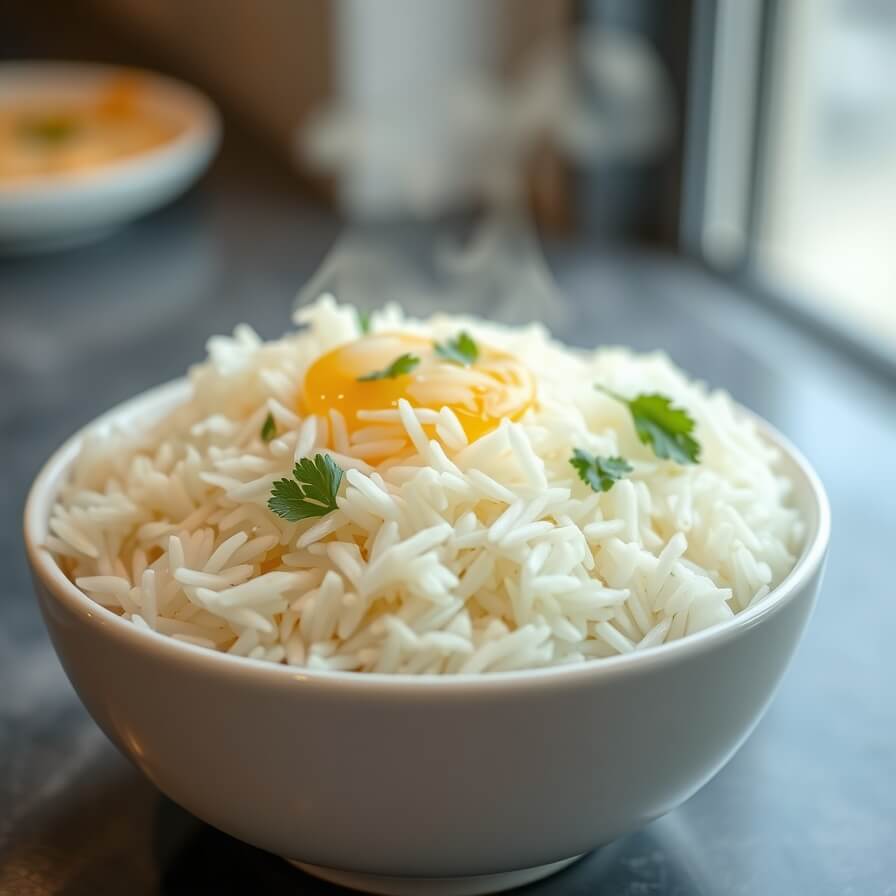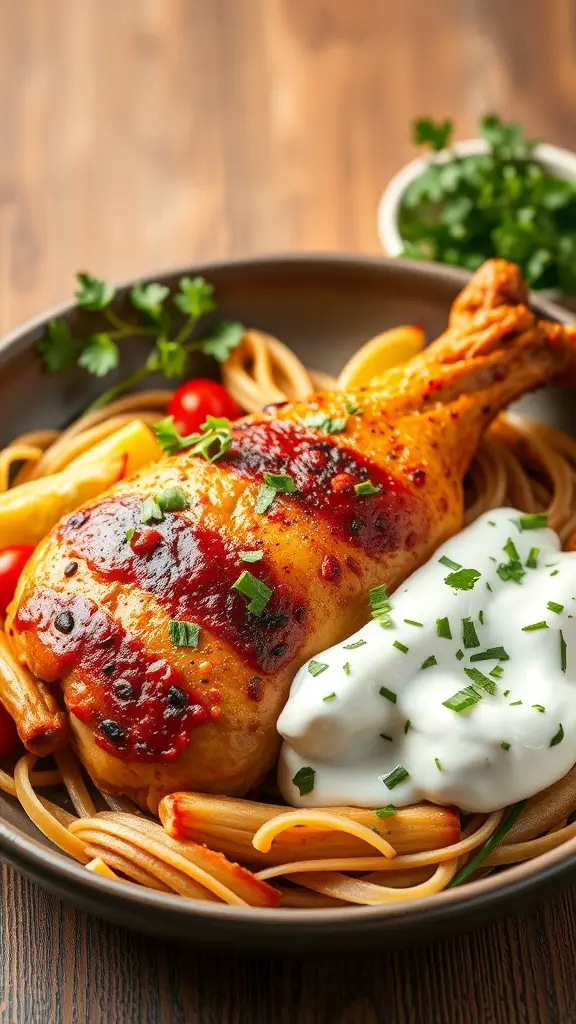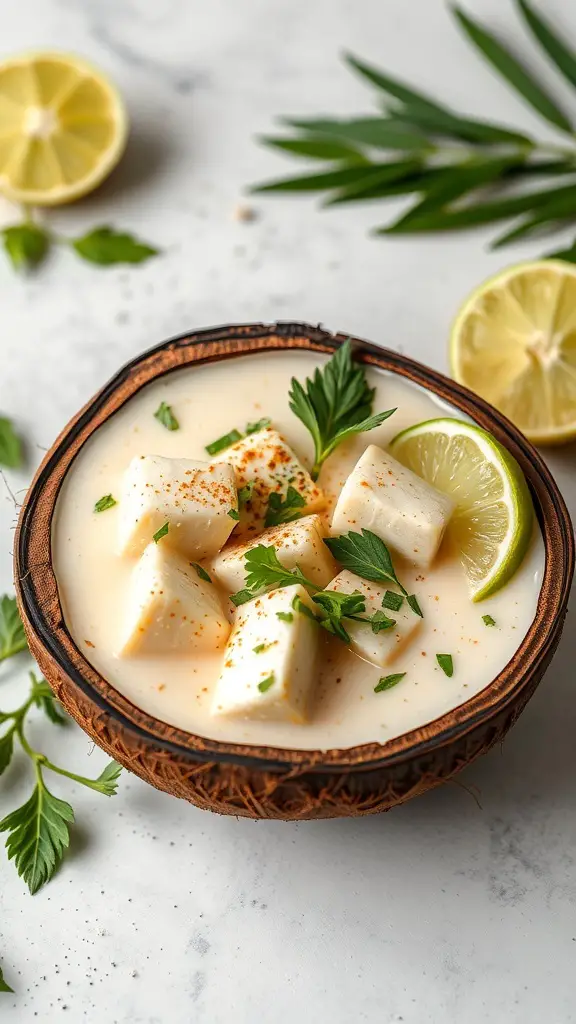Basmati Rice Recipe
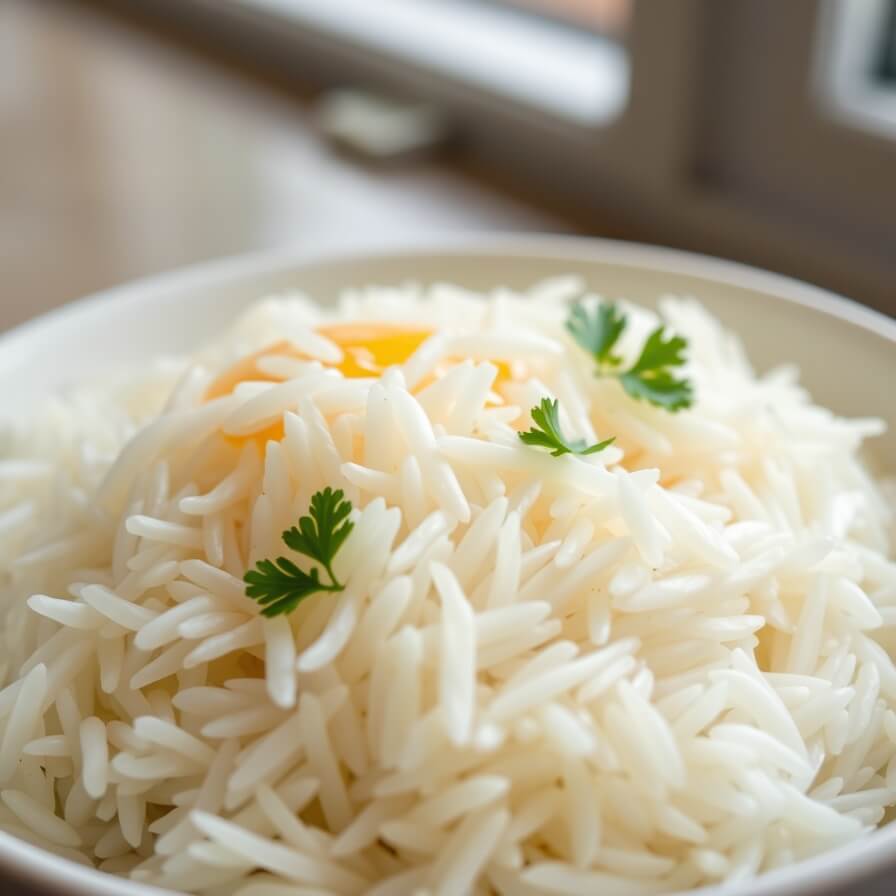
There’s something incredibly comforting about the aroma of basmati rice simmering on the stove. It’s one of those smells that instantly settles the house, almost like a signal that something warm and familiar is coming to the table. I grew up watching this rice being made almost daily, and even now, every time I rinse those long grains, I’m reminded of my mother swearing that “the secret to perfect basmati is patience.” I didn’t understand it then, but I do now.
Basmati rice sounds simple—but making it well is an art. You want fluffy grains that separate effortlessly, not the mushy, sticky pot you sometimes get when you rush the steps. And oddly enough, this is a recipe that taught me how slowing down in the kitchen really does make all the difference.
When I cook basmati rice now, whether it’s for a curry night, a weeknight dinner, or just a pot of fragrant rice for meal prep, I still follow a few little habits passed down to me. A long soak, a gentle boil, and the quiet moment when you let it rest before fluffing—these tiny steps turn a basic pantry staple into something special.
And that’s exactly what this recipe is: simple, unfussy, deeply comforting, and reliably delicious.
Why I Love This Recipe
I adore this basmati rice recipe because it brings out everything basmati is meant to be—aromatic, long-grained, soft but never soggy, and beautifully separated. It’s the kind of rice that feels elegant even though it’s incredibly easy to make.
What makes it truly special is the technique. Basmati rice isn’t just cooked; it’s handled. Rinsing removes the extra starch that causes clumping. Soaking elongates the grains and ensures even cooking. And then the steam—oh, the steam—finishes the job in the gentlest way.
Another reason I make this so often is its versatility. This recipe works with nearly every cuisine I cook at home. It pairs beautifully with curries, grilled meats, vegetable stir-fries, and even simple lentils. And when I want something fragrant, I only have to add a bay leaf or a bit of ghee, and it transforms completely.
Most of all, this recipe gives me consistency. No guessing. No mush. No stress. Every time I make it, I get long, tender, fluffy grains that taste like they came from a restaurant kitchen. And honestly, that alone makes this my go-to method.
Ingredients for Basmati Rice
For this recipe, you’ll need just a handful of ingredients, but each one plays a surprisingly important role in how the final dish turns out.
You’ll of course need basmati rice, and I always recommend a good-quality aged variety. Aged basmati has a stronger aroma, a longer grain, and a firmer texture that cooks up beautifully. If you’ve ever wondered why restaurant rice looks so long and elegant, that’s the secret: aged basmati.
Next is water—simple but crucial. The ratio matters, especially if you want fluffy rice. For this recipe, I use a precise water-to-rice ratio to ensure every grain cooks evenly.
Salt is optional, but I find that a pinch seasons the rice from the inside out. It doesn’t make it taste salty; it just enhances that natural nutty flavor.
Finally, you have the optional add-ins: a small spoon of oil or ghee, a bay leaf, cardamom pods, cloves, or even a small piece of cinnamon if you’re feeling fragrant. These elevate the rice without overpowering your main dish. Most days I cook the rice plain, but when guests come over, I love adding a hint of warmth with whole spices.
And that’s really all you need—simple, intentional ingredients that turn out perfect basmati rice every single time.
How Much Time Will You Need?
The actual cooking time for basmati rice is quick—about 15 minutes—but the prep adds just a little more.
You’ll need a few minutes to rinse the rice well, and about 20–30 minutes for soaking. The soaking step isn’t mandatory, but trust me, it’s one of the biggest reasons the grains turn out long and fluffy.
So overall, expect about 35–45 minutes, including resting time. Most of that isn’t active cooking—it’s just letting the rice do what rice does best.
How to Make This Basmati Rice

Step – 1: Rinse the Rice
Place your basmati rice in a bowl and rinse it under cold water. Gently swirl the grains with your fingers, then pour out the cloudy water. Repeat until the water becomes almost clear. This removes excess starch and prevents the rice from sticking together later.
Step – 2: Soak the Rice
Cover the rinsed rice with fresh water and let it soak for about 20–30 minutes. This step helps the grains absorb a bit of moisture so they cook evenly and become longer during steaming. Once done, drain the rice well.
Step – 3: Heat Water and Season
In a medium pot, bring your measured water to a boil. Add a pinch of salt and a teaspoon of ghee or oil if you want a richer flavor. If using whole spices, add them now so they can release their fragrance.
Step – 4: Add the Rice
Once the water is boiling, gently add the soaked and drained rice. Stir only once to distribute the grains without breaking them.
Step – 5: Cook at a Gentle Boil
Let the rice cook uncovered on medium heat until most of the water evaporates and the surface of the rice looks slightly dimpled. This usually takes about 5–7 minutes. You’ll know it’s ready for the next step when the water line drops below the rice.
Step – 6: Cover and Steam
Lower the heat to the smallest flame you can manage. Cover the pot with a tight lid and let the rice steam for 8–10 minutes. This is where the magic happens—the rice finishes cooking without being disturbed.
Step – 7: Rest and Fluff
Turn off the heat and let the rice sit, still covered, for 5 minutes. This resting step helps the grains firm up. Finally, use a fork or a rice paddle to gently fluff the rice so the grains separate beautifully.
Substitutions
If you don’t have traditional ingredients on hand, here are some excellent substitutes that work surprisingly well while keeping the rice flavorful.
If you don’t have aged basmati rice, you can still make this recipe with regular basmati or even long-grain white rice. Just adjust the water ratio slightly—most long-grain rice varieties need a bit less water.
Instead of ghee, a light cooking oil works perfectly. Olive oil, sunflower oil, or avocado oil all give subtle but clean flavors. You won’t get the same buttery aroma, but the texture remains delightful.
If you’re making fragrant rice and don’t have whole spices, you can substitute with a tiny pinch of ground cumin or a small piece of dried lemon peel. These offer warmth and brightness without overpowering the dish.
And if soaking the rice isn’t possible, you can skip it—just rinse thoroughly and increase cooking time by about two minutes.
These swaps keep the recipe flexible and beginner-friendly, so you never feel stuck if you’re missing something.
Best Side Dish of Basmati Rice
Basmati rice is wonderfully versatile, and it pairs beautifully with so many dishes. Here are three favorites I always recommend because they elevate even the simplest meal:
– A rich chicken curry with a mildly spicy gravy
– A creamy lentil dal, especially yellow or red lentils
– Grilled or pan-seared vegetables tossed with herbs and lemon
These sides bring out the aromatic, fluffy nature of basmati and make the meal feel complete.
Serving and Presentation Tips
There’s something almost elegant about a bowl of perfectly cooked basmati rice, and with just a few small touches, you can make it look instantly more inviting. I always find that presentation matters, even when the dish itself is simple. It sets the tone for the meal and makes the whole experience feel a bit more special.
One of my favorite ways to serve basmati rice is to use a wide, shallow bowl instead of a deep pot. Spreading the rice out allows the steam to escape so the grains stay separate and fluffy. You can also lightly run a fork through the rice just before plating to give it that restaurant-style look.
Another small touch I love is garnishing. A sprinkle of fresh cilantro, a few fried onions, or even a tiny drizzle of ghee can elevate the appearance and aroma. If I’m serving it alongside curry or grilled meat, I like to spoon the rice into a small bowl, press gently, and invert it onto the plate for a neat dome shape. It’s simple, but guests always notice and appreciate it.
Tips and Tricks to Make This Recipe More Better
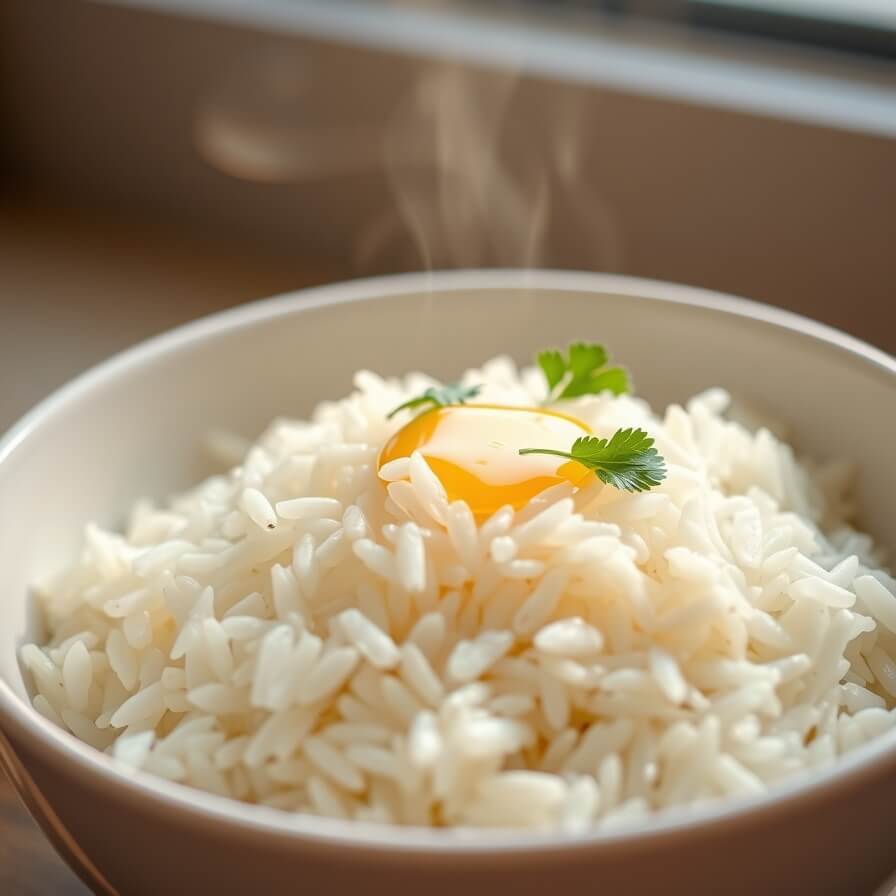
Every pot of rice teaches you something new, and over the years I’ve learned a handful of tricks that make a world of difference. One of the biggest lessons is to respect the soaking time. It might seem unnecessary, but it truly transforms the texture.
Another tip is to avoid stirring once the rice is added to the boiling water. Stirring breaks the grains and releases starch, which leads to stickiness. Let the rice cook undisturbed and trust the process.
If you want extra aroma, try adding a tiny splash of lemon juice to the cooking water. It helps keep the grains separate and adds a subtle brightness. Using a heavy-bottom pot also helps prevent burning and cooks the rice more evenly.
Finally, once the rice is done, always let it rest. That five-minute break after turning off the heat is essential—it allows the moisture to distribute fully so the rice becomes fluffy instead of gummy.
Common Mistakes to Avoid
One common mistake is using too much water. Basmati rice is delicate, and even a small amount of excess water can make it mushy. Stick to the right ratio, and don’t add more midway through cooking.
Another mistake is skipping the rinse. When you don’t rinse the rice properly, the excess starch clings to the grains, resulting in a sticky texture that feels nothing like true basmati.
Opening the lid too often during steaming is another issue. Every time the lid lifts, steam escapes and interrupts the cooking process, which can leave the rice undercooked or unevenly cooked.
And finally, cooking on high heat the entire time can lead to burnt bottoms and broken grains. Once the rice starts to boil, always reduce the heat for proper steaming.
How to Store It
If you have leftover basmati rice, storing it properly helps keep it soft and fresh. Let the rice cool completely before packing it away—this prevents moisture from collecting and turning the rice mushy in the fridge.
Place the cooled rice in an airtight container, preferably a shallow one, so the rice doesn’t get compressed. Store it in the refrigerator for up to four days.
If you want to freeze it, spread the rice on a tray and freeze it first, then transfer the frozen rice to a freezer bag. This keeps the grains separate and makes reheating easier. When reheating, sprinkle a little water over the top and warm it gently on the stove or in the microwave to restore its moisture.
FAQ
How do I keep basmati rice from becoming sticky?
Rinsing thoroughly, avoiding stirring, and using the right water ratio all help keep the rice fluffy and separate.
Can I use brown basmati rice in this recipe?
Yes, but the cooking time and water ratio will change. Brown basmati takes longer to soften and requires more water.
Is soaking necessary?
While not mandatory, soaking makes the grains longer, softer, and more evenly cooked. It also reduces cooking time.
Can I add spices while cooking?
Absolutely. Whole spices like bay leaves, cloves, cardamom, and cinnamon add a beautiful fragrance.
What’s the best pot to use for cooking basmati rice?
A heavy-bottom pot with a tight-fitting lid ensures even cooking and prevents burning.

Basmati Rice Recipe
- Total Time: 25 minutes
- Yield: 4
- Diet: Gluten Free
Description
This basmati rice recipe is one of my staples because it never fails to deliver light, aromatic, and beautifully separated grains. With a simple rinse, soak, and steam method, you can transform ordinary rice into a deeply flavorful and elegant side dish. Whether you’re pairing it with curries, grilled vegetables, or hearty stews, this recipe ensures restaurant-quality results at home. The technique is simple enough for beginners yet reliable enough for experienced cooks, making it a perfect addition to your weekly rotation. Once you learn these small steps, you’ll never struggle with mushy rice again.
Ingredients
- Basmati rice
- Water
- Salt
- Ghee or oil
- Optional whole spices (bay leaf, cardamom, cloves)
Instructions
- Rinse the rice until the water runs almost clear.
- Soak rice for 20–30 minutes, then drain.
- Bring water to a boil and season with salt and oil.
- Add rice, cook uncovered until most water evaporates.
- Cover and steam on low heat for 8–10 minutes.
- Rest for 5 minutes, then fluff with a fork.
Notes
- Use aged basmati rice for the longest, fluffiest grains. Avoid stirring during cooking to prevent breakage. A small splash of lemon juice helps keep grains separate.
- Prep Time: 10 minutes
- Cook Time: 15 minutes
- Category: Side Dish
- Method: Stovetop
- Cuisine: South Asian
Nutrition
- Serving Size: 4
- Calories: 206
- Sugar: 0g
- Sodium: 148mg
- Fat: 1g
- Saturated Fat: 0g
- Unsaturated Fat: 0.5g
- Trans Fat: 0g
- Carbohydrates: 45g
- Fiber: 0.6g
- Protein: 4.3g
- Cholesterol: 0mg

